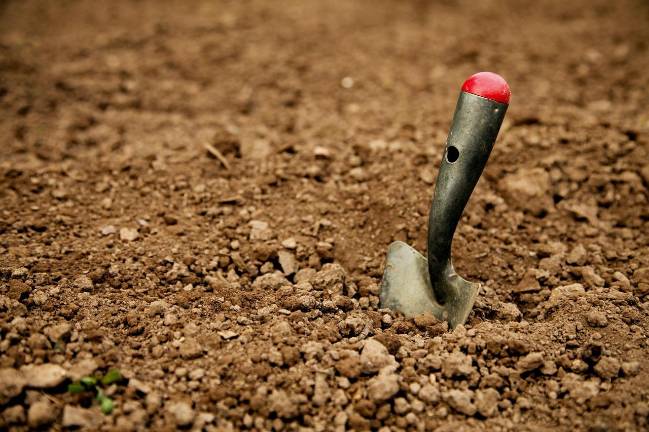Students unearth mastodon remains
Orange County. The excavation followed an earlier discovery of teeth on a private residence near Middletown.

Quite literally in their own backyard in Orange County this summer, 12 SUNY Orange students and two professors recently completed a once-in-a-lifetime field experience course in which they unearthed the partial remains of a mastodon estimated to be between 10,000 and 13,000 years old.
For six weeks, under the watchful eyes of professor Dr. Cory Harris and instructor Anthony Soricelli, the students excavated several one-meter-by-one-meter test units in the hopes of finding additional remains on the heels of a discovery in September 2024 of two mastodon teeth and an intact lower jaw (with teeth) on the property of a private residence near Middletown.
Orange County could be considered the epicenter of mastodon discovery in New York, with approximately one-third of the state’s finds located in the county.
By all accounts, the summer field course, which concluded on July 3, was a resounding success as the SUNY Orange team uncovered multiple vertebrae (including the atlas vertebra), additional jaw fragments, and ribs, all of which are believed to belong to the same Ice Age mastodon. The atlas bone serves as a base for the skull by bearing its weight and maintaining its upright position. Those items have been shipped to the New York State Museum for examination and curation. The group also located a series of smaller pieces of unidentified bones and skeletal fragments, many of which are currently stored at the College’s Middletown campus.
Once the jaw was unearthed and it was apparent more remains might be discoverable, it was important to SUNY Orange President Dr. Kristine Young and her academic leadership team to support Harris and Soricelli, a geology instructor, in organizing the summer class. The homeowners had shown great trust in originally reaching out to the College in the Fall, and the burgeoning partnership with the NYS Museum was uniting SUNY Orange and the museum in a shared mission of uncovering and preserving history, with students at the heart of the project.
“When I visited the site, it filled my heart to see our students out there digging, sifting, discovering, and learning,” Young said. “SUNY Orange was uniquely positioned. I’m so proud of our faculty for stepping up to offer this opportunity, and just as proud of our students for grabbing hold of it with both hands. Dr. Harris was ready to lead this effort, and Professor Soricelli brought the geological expertise that elevated the entire experience. It’s the kind of moment that reminds you what’s possible when talent meets opportunity at community colleges.”
Harris, too, believes there is more of this gentle giant just beneath the surface. More than the excavation team could expose in just six weeks. But for now, in accordance with archeological best practices, the site has been returned to its original state. The students’ detailed charts, graphs and notes remain as a map for future crews to possibly pick up where this 2025 team left off.
And the memories of delicately excavating skeletal remains of a mammoth prehistoric mastodon will last a lifetime for a dozen SUNY Orange students and two professors who found themselves leading a once-in-a-lifetime project.